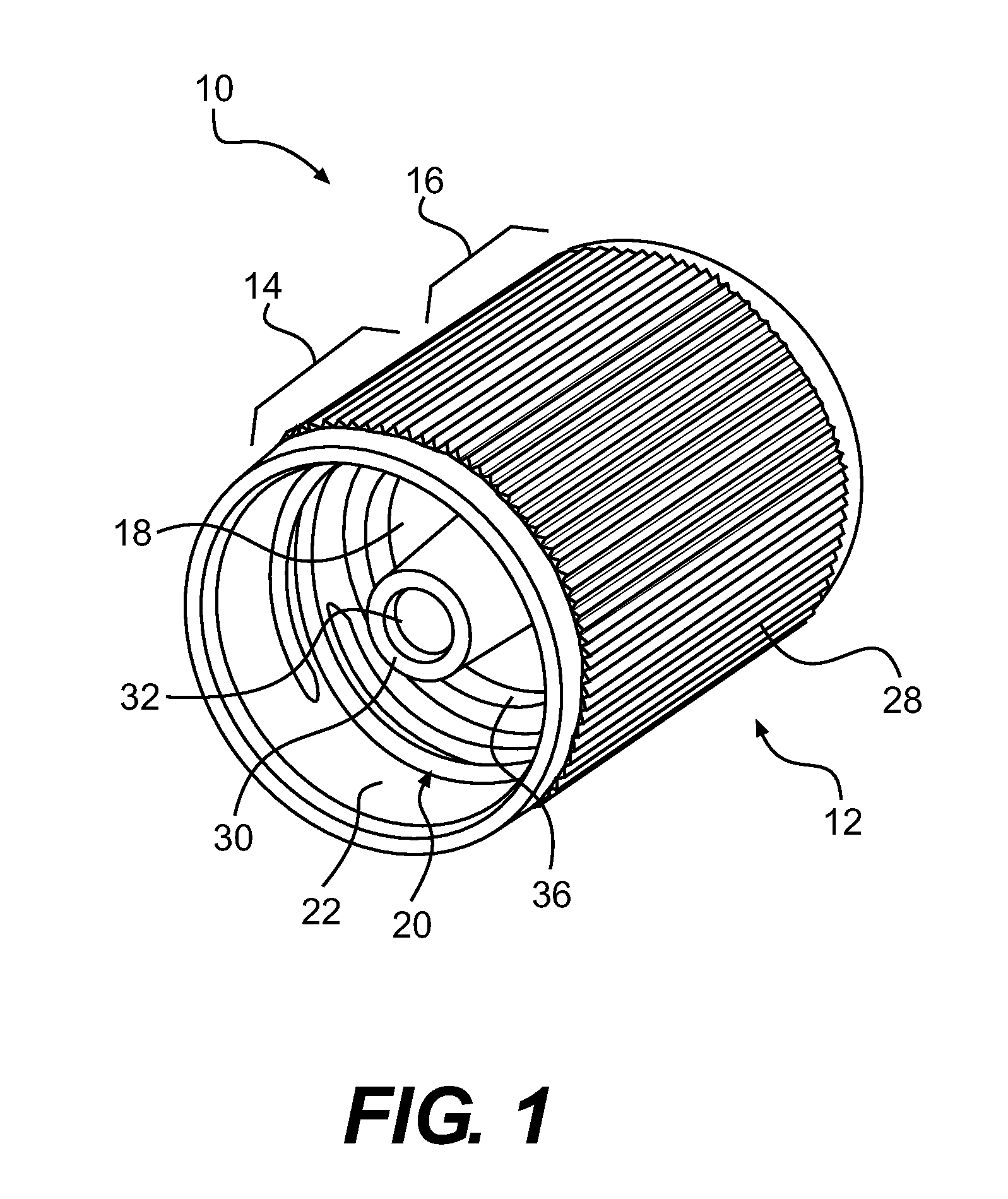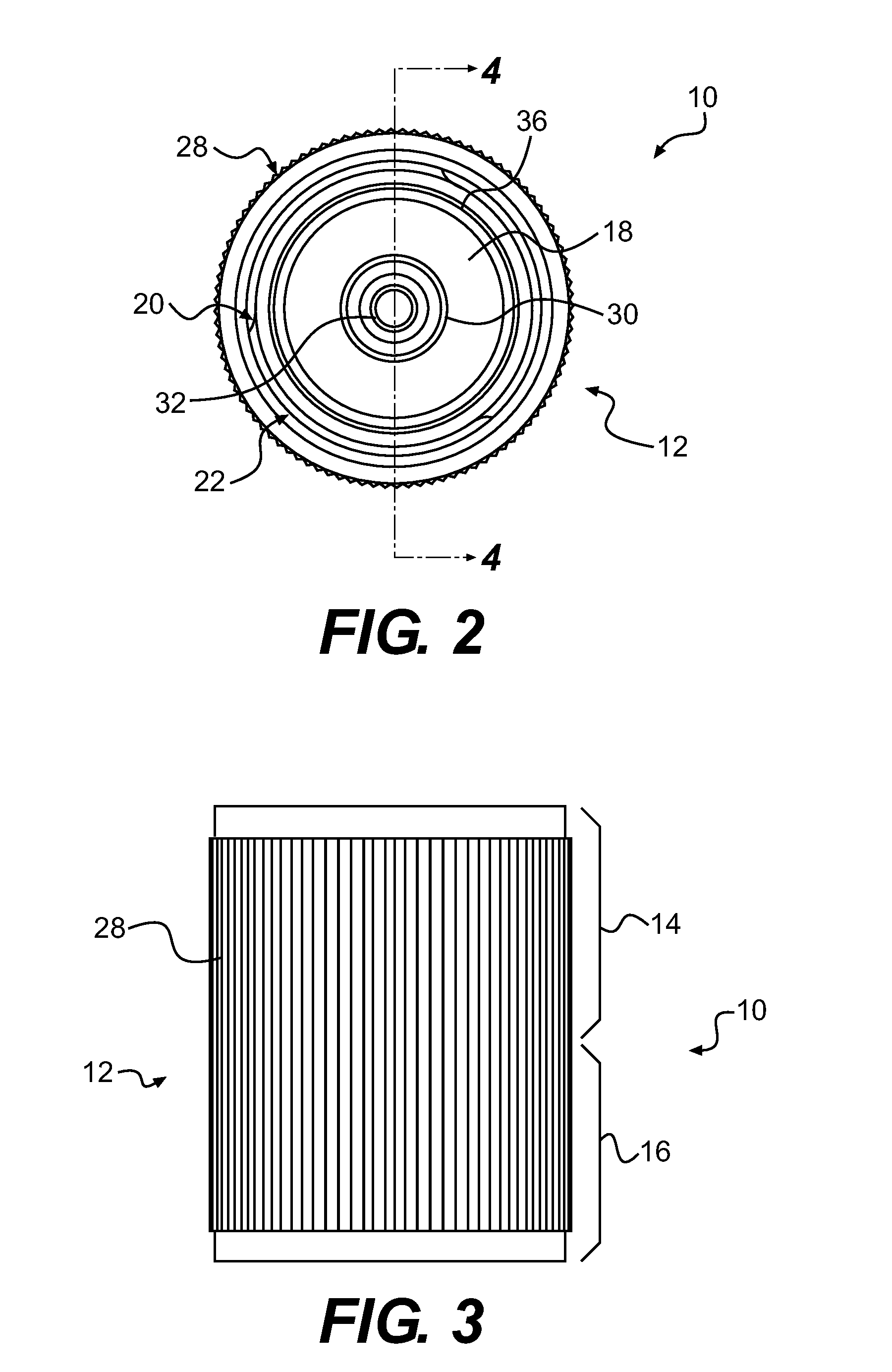Closure, containing apparatus, and method of using same
a technology of containing apparatus and container, which is applied in the direction of container, closure lid, diagnostics, etc., can solve the problems of contamination of samples, difficult collection and processing, and increased likelihood of inversion or severe jostling of collection devices during transportation
- Summary
- Abstract
- Description
- Claims
- Application Information
AI Technical Summary
Problems solved by technology
Method used
Image
Examples
Embodiment Construction
[0052]A closure 10 for a container in accordance with aspects of the present invention will be described with respect to FIGS. 1 to 4. As should be understood from FIGS. 1 to 4, the closure 10 is intended for use with a container having a thread region on an outer surface thereof. The closure 10 has a closure body 12 separated in two cylindrical portions 14 and 16 by a closure wall 18. The cylindrical portion 14 is provided with a thread region 20 extending inwardly from a cylindrical interior wall 22 thereof. Similarly, the cylindrical portion 16 is provided with a thread region 24 extending inwardly from a cylindrical interior wall 26 thereof. Both thread regions 20 and 24 are designed to complement a thread region of the container to which the closure 10 is to be connected, thus allowing both portions 14 and 16 to be screwed onto the container. Although each thread region 20, 24 is shown as having a single thread, it is contemplated that each thread region 20, 24 could have multi...
PUM
 Login to View More
Login to View More Abstract
Description
Claims
Application Information
 Login to View More
Login to View More - R&D
- Intellectual Property
- Life Sciences
- Materials
- Tech Scout
- Unparalleled Data Quality
- Higher Quality Content
- 60% Fewer Hallucinations
Browse by: Latest US Patents, China's latest patents, Technical Efficacy Thesaurus, Application Domain, Technology Topic, Popular Technical Reports.
© 2025 PatSnap. All rights reserved.Legal|Privacy policy|Modern Slavery Act Transparency Statement|Sitemap|About US| Contact US: help@patsnap.com



